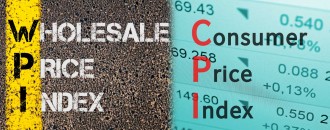
Inflation maintains a rising trend
By Abin Daya In line with our expectations, CPI inflation inched up in March, though WPI inflation eased a bit. Considering the significant gap between retail and wholesale inflation even now, it remains to be seen whether the former will move up further, despite wholesale inflation coming down. Indian steel industry seems to have got its mojo back in 2016, and this is expected to continue for the next two years. Steel production and consumption grew by 7.4% and 4.1% respectively, highest amongst all major producers and consumers. We give you a snapshot of what the World Steel Association is forecasting for 2017 and 2018. Retail inflation In the weekly update for week 11, we had mentioned that we expect CPI inflation to move ...
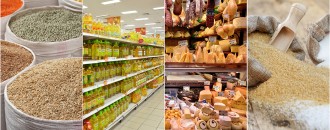
World food prices averaged higher in Feb, FAO
The Dollar Business Bureau The world food prices rose slightly higher in February spurred by an increase in the prices of cereals, the Food and Agriculture Organization (FAO) of UN said in a release on Thursday. The FAO Food Price Index (FFPI) is a monthly measure of change seen in the international prices of food commodities. The FPPI consists of five commodity group price indices, cereals, vegetable oils, dairy, meat and sugar, weighted with the average export shares of each of the groups for 2002-2004. According to the release, food prices averaged 175.5 points or 17.2% higher in February which is slightly higher than the January values but the highest seen since February 2015. Excepting for the prices of vegetable oils the prices ...

Inflation in China reaches to multi-year highs
The Dollar Business Bureau The producer price inflation of China has increased more than what is estimated in the month of January to near 6-year high on account of a pick-up in steel prices and other raw material prices, adding to estimates that world manufacturing activity is gaining momentum. China’s consumer inflation also increased more than expected to around three-year high, according to a data released on Tuesday. Much of the increase in consumer prices was due to higher prices of food and transportation in the wake of a long holiday for Lunar New Year, as per the National Bureau of Statistics. But mounting pressures of prices in China and several other developed countries have sparked speculations of a stricter monetary policy in 2017, ...
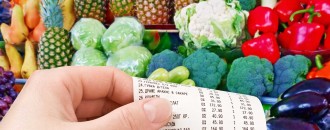
World food prices decline for 5th consecutive year in 2016
The Dollar Business Bureau World food prices decreased for the fifth consecutive year in 2016 due to the falling prices of cereal, meat and dairy markets that outweighed the price rise in sugar and vegetable oils, as per the UN Food and Agriculture Organisation (FAO). In 2016, FAO’s global food price index averaged 161.6 points which is 1.5% below the level witnessed in 2015, and around 30% lower than the 229.9 points recorded in 2011. The index keeps a track of changes in monthly and annual international prices for an array of commodities across five groups namely major cereals, vegetable oils, dairy, meat and sugar. According to the organisation, cereal prices witnessed a decline of 9.6% in 2016 and decreased to 39% from its peak in 2011. On the ...

Goldman Sachs revises Indias CPI forecast to 5.5%
The Dollar Business Bureau Financial services firm, Goldman Sachs, has revised its CPI forecast slightly upwards for India to 5.5 percent for the current fiscal 2016-17 mentioning higher prices of food. However, the firm said that the upside risks are partial due to a delay in rolling out the seventh pay commission. According to the American multinational banking major, narrowing gap of the output and dwindling favourable base effects due to weak prices of commodities may result in an increase in inflation. “We mechanically adjust our FY17 headline CPI inflation forecasts upwards to 5.5 percent y-o-y, from 5.3 percent earlier, due to higher than expected food inflation readings year-to-date,” Goldman Sachs said in a research note. “Core inflation is likely to average 4.8 percent ...
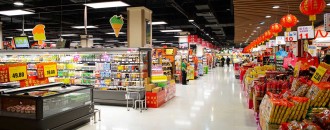
Retail inflation rises to 5.76%, a 21-month high
The Dollar Business Bureau Retail inflation accelerated to a 21-month high of 5.76 percent in May due to rising food prices, including vegetables, making it unlikely for RBI to cut rates in the coming months. Based on the Consumer Price Index (CPI), retail inflation, which takes into account the rate of yearly price change, was at 5.47 per cent in April. Retail inflation was at 5.01 percent in May 2015, while in in August 2014, consumer inflation stood at 7.8 percent. According to government data, among the items measured for consumer inflation vegetables, recorded the steepest price surge at 10.77 percent in May against the 4.82 percent in April. Items rich in protein also witnessed a rise in prices: fruits 2.64 per cent, eggs ...
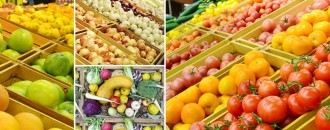
Good monsoon unlikely to lower food price inflation
The Dollar Business Bureau A good monsoon this year is unlikely to help reduce food price inflation, Nomura said in a report. According to the Japanese brokerage firm, even though markets and the Reserve Bank are hopeful of a good monsoon this year, it is unlikely to play a key role in lowering the country’s food price relation as correlation between food price inflation and rain is low. The global financial services major noted that more than monsoon rainfall, other important factors such as global food price trends, minimum support prices (MSPs), nominal rural wages and non-labour agriculture input costs play a key role in reducing food price inflation. “As the above drivers of food price inflation have already stabilised, we do not expect ...

Food prices hike may cost Indias GDP $49 bn
The Dollar Business Bureau The United Nations Environment Programme (UNEP) - Global Footprint Network Report said that India and China may lose around $49 and $161 billion respectively if the global food prices increase. The report also mentioned, “In the future, the world is likely to suffer from higher and more volatile food prices as a result of a growing imbalance between the supply and demand of food.” The rising populations and incomes will intensify the demand for food, while climate change and resource scarcity will disrupt food production, it further added. “Fluctuations in food prices are felt directly by consumers and reverberate throughout national economies. As environmental pressures mount, it is important to anticipate the economic impact of these stresses, so that ...


